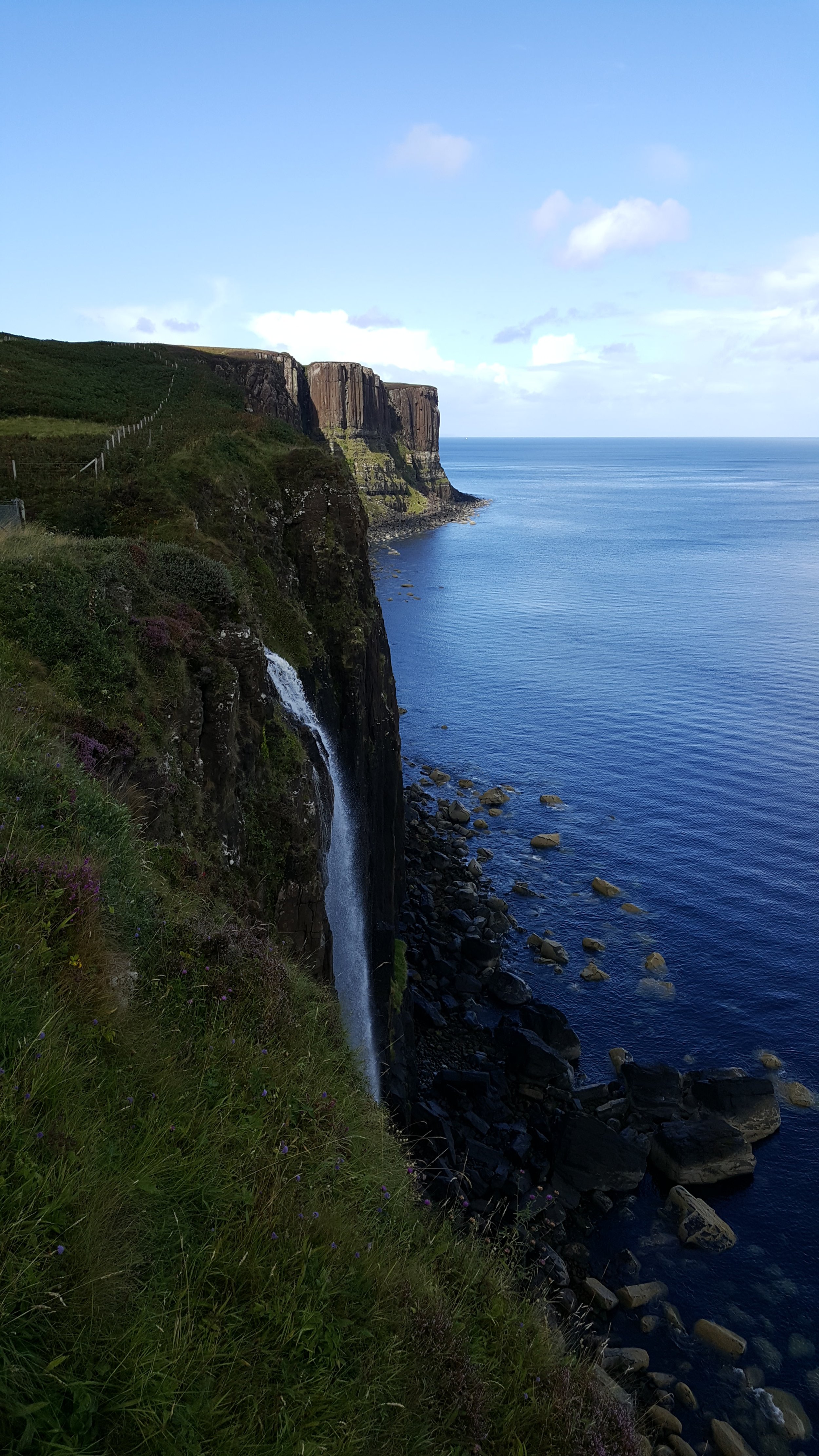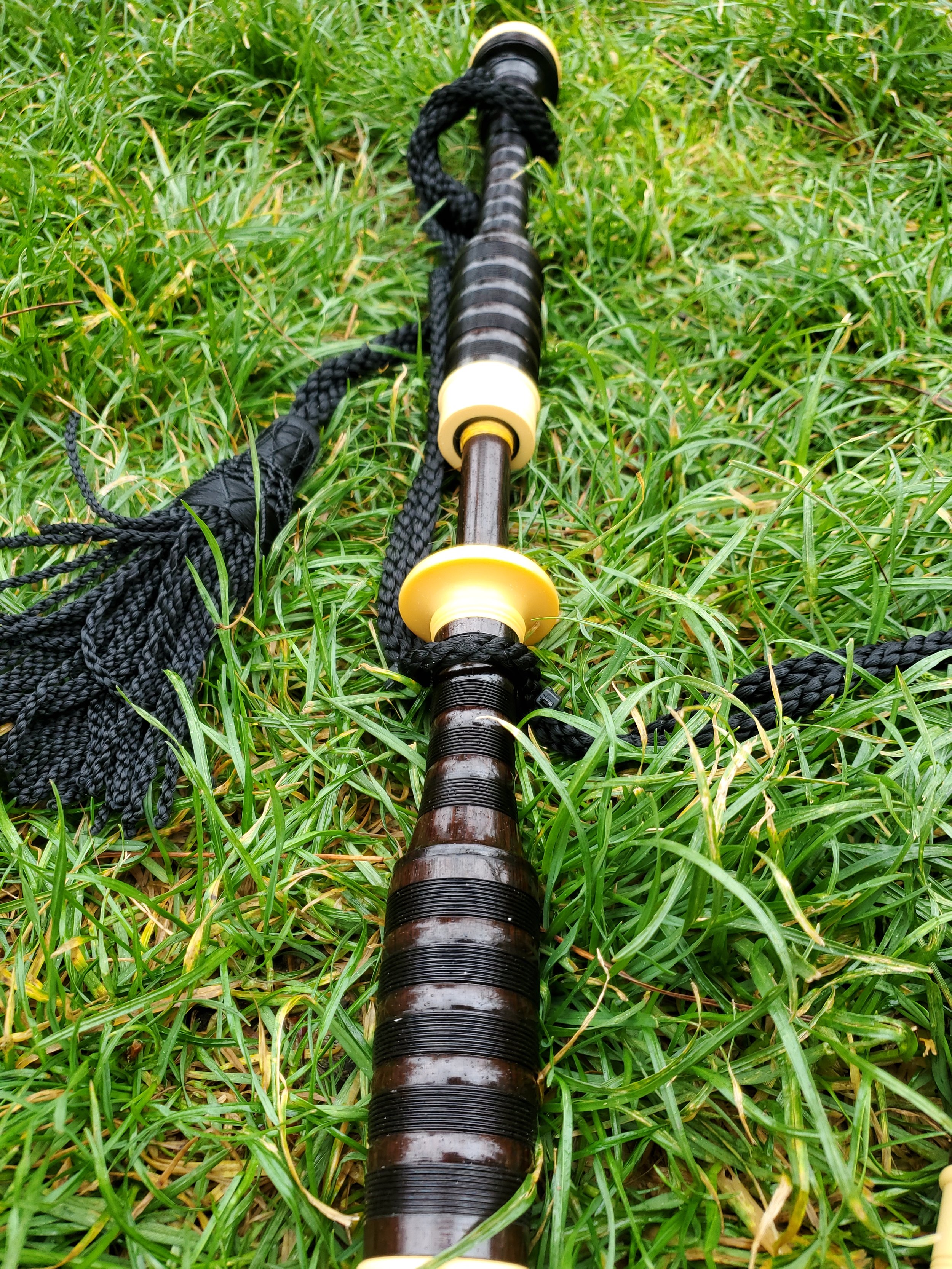
A little about me.
I began playing the pipes at twelve after watching my dad learn for a few years. He’s my first teacher, and had me wait for a year to ensure my interest was genuine; piping is an investment after all! Luckily I was patient. After numerous instructors and over a decade of competitive success, I now instruct two pipe bands (so far) and teach a growing group of wonderful students.
“What’s your skill level?”
My skill level is known as “Open”; Grades 5, 4, 3, 2, and 1 are considered “amateur” grades, but those falling in these categories are still competent pipers. Open is the next step. This means two things: I win money if I place well during competitions, and the best players in the world are now my competitors. Gulp.
A close-up view of the bass drone.
Playing a Piece of History:
I’m rather proud of my “Big Tweedies”, as they’ve been called by friends. Their original date of manufacture is unknown to me, but I received them packed with newspaper dated 1977. The following is pulled from Ron Bowen’s brilliant website, The Bagpipe Place Museum:
“Jim Tweedie was a turner for Wm. Sinclair and Hugh MacPherson in the 1960’s before opening his own business in Edinburgh in the early 1970’s. … I don’t know where Jim acquired his skills and knowledge however, to be certain, he knew his business. Wood was aged a minimum of eight years and Jim was the first to perfect polished bores. Aesthetically, his standard bagpipe following the profile of flat-combed Sinclair and MacPherson bagpipes, but a bit ‘heftier’ in appearance. He also made ‘beaded & combed’ sets, although seemingly not too many. The bells were quite deep and disproportionate in size. The sound is and remains spectacular. … The first Tweedie bagpipe I played the bass failed to start. I tuned the tenors and thought ‘Hey, they’re pretty nice.’ Then I popped on the bass and it just blew me away. It was magnificent. Without reservation, Tweedie drones are among the best sounding drones I have played.”
I’ve set them up to sound as they originally would, a bit lower-pitched and “warmer” in sound texture as compared to more modern tuning. Hear how bagpipes from the early to mid-1900s would sound on the streets of Edinburgh by checking out my Samples page!

